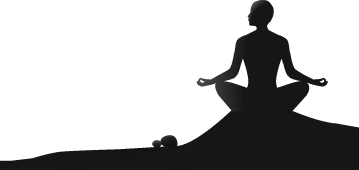Master the Art of Meditation
One way to maintain balance in our lives is to practice the ancient art of meditation.
By Dr. Sharon Puszko
Meditation is defined as "engaging in contemplation or reflection; or to engage in mental exercise (as concentration on one's breathing or repetition of a mantra) for the purpose of reaching a heightened level of spiritual awareness." (Merriam-Webster, 2009) I would add that although spiritual awareness is one goal, it is not the only one.
Many people find meditation beneficial in managing stress, reaching mental tranquility, focusing attention and maintaining an overall healthier lifestyle. In fact, the results of more than 1,000 peer-reviewed articles on meditation suggest that regular practice of meditation is associated with "significant relief from a variety of stress related physical and mental problems, a stronger immune system, longer life, increased energy and positive changes in brain function."
Moreover, results from a study led by Massachusetts General Hospital research scientist Sara Lazar showed that the gray matter of men and women who meditated for just 40 minutes a day was thicker than that of people who did not. It also showed a thickening of the brain's cerebral cortex, which is responsible for decision-making, attention and memory. Considering the potential for memory loss, dementia and other symptoms of cognitive decline as we age, this is indeed encouraging!
 If you have never meditated before, why not give it a try? It might seem awkward at first, but if you stick to it, you will find yourself enjoying it more and more. There are many types of meditation, all of which help lead you toward greater mental and physical tranquility and a sense of focus. One common type of meditation directs you to focus on a specific sensory perception, word or object. The ultimate goal is to be able to tune out all external stimuli and internal thoughts. Another common practice is essentially the opposite of this: the goal is to focus on internal and external feelings and perceptions, so one becomes more aware of what is happening in the present moment. The following are some suggestions as an introduction to the practice of meditation.
If you have never meditated before, why not give it a try? It might seem awkward at first, but if you stick to it, you will find yourself enjoying it more and more. There are many types of meditation, all of which help lead you toward greater mental and physical tranquility and a sense of focus. One common type of meditation directs you to focus on a specific sensory perception, word or object. The ultimate goal is to be able to tune out all external stimuli and internal thoughts. Another common practice is essentially the opposite of this: the goal is to focus on internal and external feelings and perceptions, so one becomes more aware of what is happening in the present moment. The following are some suggestions as an introduction to the practice of meditation.
- Choose a relaxing, low-light location free from distractions. Remember, this is un-interrupted "you" time.
- Sit comfortably on the floor, in a chair with your back straight, or perhaps in your garden or your favorite quiet space, which could be near the ocean, a lake or any other relaxing body of water.
- Close your eyes and slowly take deep breaths.
- Try to focus only on your breathing, the rise and fall of your abdomen, and how the air feels as each breath goes in and comes out.
- As external thoughts start to pass through your mind, calmly acknowledge them and bring your focus back to the sensation of your breathing.
-
 As time goes by, you will notice your sessions become longer as your ability to concentrate improves.
As time goes by, you will notice your sessions become longer as your ability to concentrate improves.
- End your session by opening your eyes and allowing yourself to gently return to your normal daily routine feeling relaxed and refreshed.
While this is a good routine to start with, it is by no means the only one. You also can visit a helpful web site called FreeMeditations.com for more examples of meditations. Whichever path you choose, may it be a contemplative one!
Sharon Puszko, PhD, LMT, is a licensed massage therapist and the owner/director/educator for Day-Break Geriatric Massage Institute.

